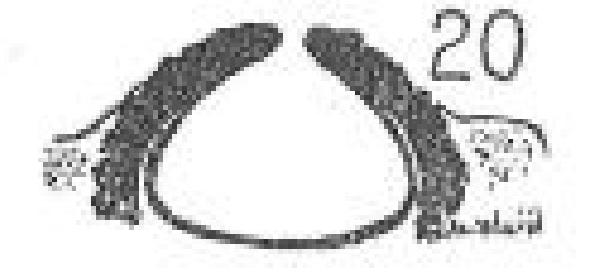Verrucaria boblensis Servít
Věstn. Král. České Společ. Nauk, Třída Math.-Přírod. ,10: 6, 1948 (1947)
Synonyms:
Distribution:
Description: Thallus crustose, endo- to hemiendosubstratic, continuous to rimose, grey to rarely pale brown, without minute brownish flecks, 0.02–0.15 mm thick. Perithecia black, 0.2–0.3(–0.35) mm across, not covered by a thalline layer, (1/2–)3/4-immersed, the base usually not in pits. Involucrellum apical, 30–60 μm thick laterally; exciple pale, 0.2–0.25 mm wide; hamathecium of periphyses measuring c. 25–40 × 1.5–2.5 μm , interascal filaments absent; hymenial gel hemiamyloid, I+ red (I+ blue at very low concentrations of I), K/I+ blue. Asci 8-spored, clavate, I-, fissitunicate, the wall thickened above, with an ocular chamber, dehiscent by extrusion of an endotunica to form a delicate rostrum, Verrucaria-type. Ascospores 1-celled, hyaline, ellipsoid (13–)15–20 × 8–11 μm. Photobiont chlorococcoid. Spot tests: K-, C-, KC-, P-, UV-. Chemistry: without lichen substances.Note: a calcicolous species recalling (in section) V. muralis, but with smaller ascospores, described from Romania and known from several scattered records in Northern and Central Europe, including the Eastern Alps (Austria). To be looked for in Italy.
Growth form: Crustose
Substrata: rocks
Photobiont: green algae other than Trentepohlia
Reproductive strategy: mainly sexual

Predictive model
Growth form: Crustose
Substrata: rocks
Photobiont: green algae other than Trentepohlia
Reproductive strategy: mainly sexual

Predictive model


